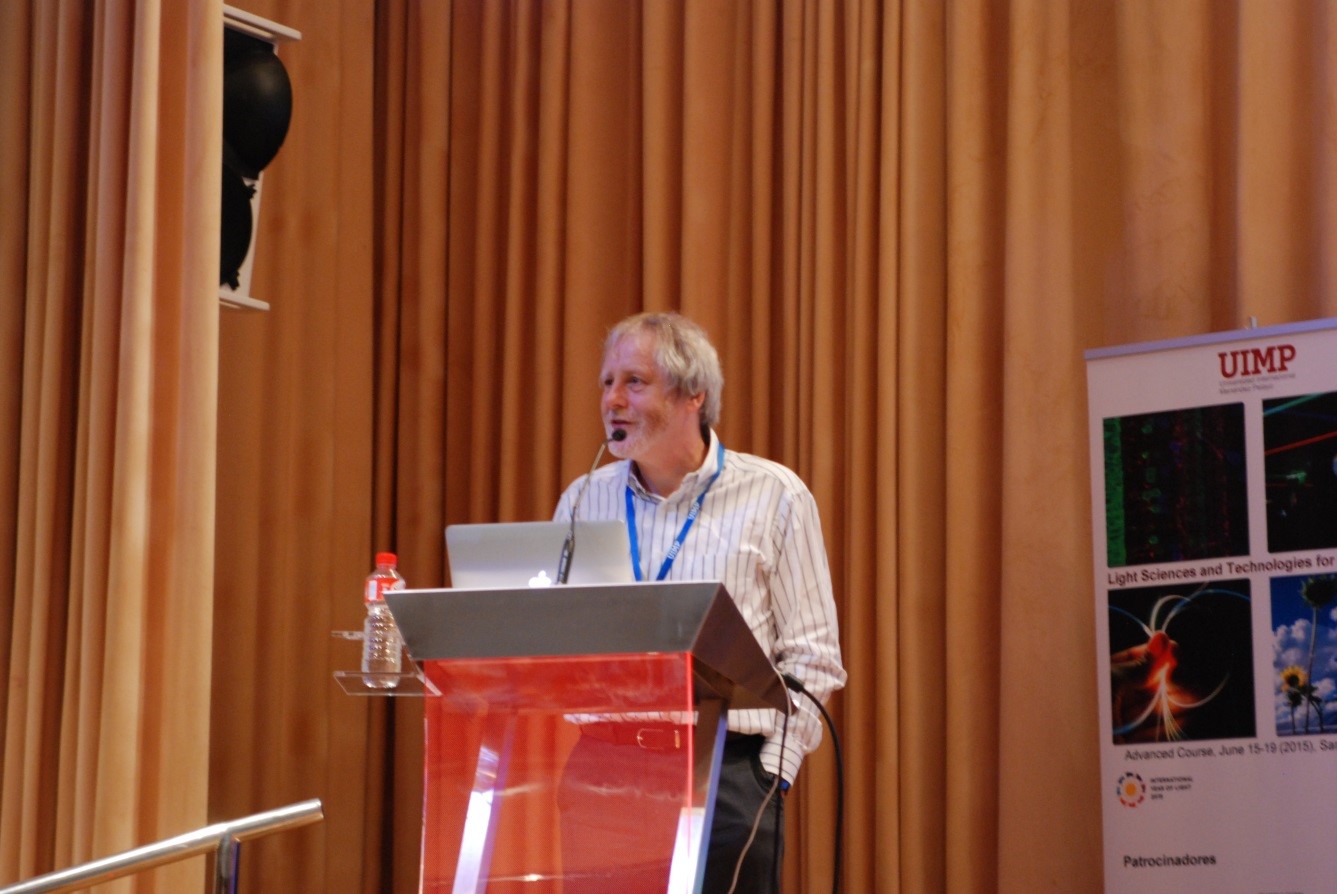OSA President Honored by prestigious International Spanish University
The Menendez Pelayo International University, UIMP, will invest Prof. Philip Russell as “Doctor Honoris Causa”. He is the inventor of the Photonic Crystal Fibers known as PCFs, and current Director of the Max Planck Institute for the Science of Light, Germany. He will receive this distinction during the first edition of the International School on Light Sciences and Technologies that will be held on June 2016 in Santander, Spain.

This prestigious institution will confer a honorary doctorate to Prof. Philip Russell by unanimous agreement of its Governing Council, who wanted to recognize the Northern Ireland scientist relevant contributions to the sciences and technologies of light (Photonics) and, in particular, in the area of Fiber Optics, line of work which began almost half a century ago by Professor Charles Kao, Nobel Prize in Physics in 2009.
Prof. Russell is the inventor of the optical fibers known as Photonic Crystal Fibers (PCFs), which are already widely used both in the academic and industrial arenas. A large number of laboratories and research groups from all over the world are exploring applications of PCFs in lasers, nonlinear optics, medicine, supercontinuum generation, photochemistry, telecommunications, astronomy and fibers for the guidance of very high powers of laser light for manufacturing and machining.
The application of greater commercial impact to date are the so-called "supercontinuum sources " based on the solid core of PCFs that are light sources that are more closer to the concept of "white light source" (which generates photons at all frequencies). These supercontinuum sources have revolutionized many aspects of science and technology, and are now standard accessories in microscopes and Photonic instrumentation (which work through concepts and techniques of light) of high range.
After his appointment, Russell said to feel honored and deeply grateful to UIMP since this doctorate Honoris Causa "recognizes three decades of research, traveling all the way from the sketched idea to the development of its applications in many real-world devices". He also explained that he is currently working in the searchof a range of unique and extremely bright sources of tunable deep and vacuum ultraviolet light, driven by ultrashort pulses of infrared light and based on (a) gas-filled hollow core PCF or (b) solid-core fluorozirconate glass PCFs. These sources will revolutionize spectroscopy in these spectral regions.
He also works on short-pulse fibre lasers which are self-stabilised by optoacoustic interactions in a very small PCF core; on continuously twisted "chiral" solid-core PCF that acts like an "optical impeller", forcing a twist on light. Essentially, an optical vortex with fascinating properties is created in the twisted core. The resulting "Twisted Light" can be used, e.g., to make small particles spin. Their ongoing research focuses also on trap and propel particles over 100 m distances in hollow core PCF. His group is developing a range of novel "flying particle" sensors for e.g. temperature, vibration and radiation level. Another of its lines of work involves the use of hollow core PCFs as micro-reactors for optical studies of photochemical processes.
Professor Russell has published over 400 scientific articles that have received more than 26.662 citations. He has received honors and awards including the OSA Joseph Fraunhofer AwardRobert M. Burley Prize, 2000; Thomas Young of the Institute of Physics Award, 2005; the Körber Prize for European Science, 2005; the EPS Prize for Research into the Science of Light, 2013; the Berthold Leibinger Zukunftspreis Award and the IEEE Photonics Award both in 2015, among others.
Prof. Russell will receive this prestigious distinction at a solemn ceremony to be held during the first edition of the International School on Light Sciences and Technologies, directed by Professor José Miguel López Higuera of the University of Cantabria that will take place in June 20 to 24 (2016) in the Palacio de la Magdalena, Santander.
